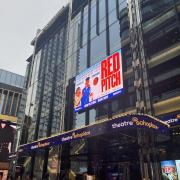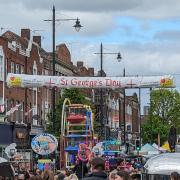
It has always been quite a perplexing question whether or not graffiti is vandalism or in fact an art form. Graffiti is looked upon by most people as a form of criminal damage and defined as illicitly marking, writing, painting, drawing, scratching or cutting pictures or words written or drawn in public places.
In Britain graffiti is considered a crime and anyone caught can be arrested and prosecuted under the Criminal Damage Act 1971 which could ultimately result in 10 years imprisonment or fined if the damages cost more than £5,000. If the damages are less than £5,000 then you could receive a two months imprisonment or a £2,500 fine.
There is a clear differentiation between tagging, gang symbols and street art. Graffiti comes in many forms whether it be tags, slogans or vibrant and imaginative street art. Tagging is a form of graffiti and is used to signify possession and control over a specific area and this is considered to be anti-social and a sign of gang territory. The tagging at the end of a terrace, a garden wall or those on the sides of flats are the most commonly complained about graffiti because it is discourteous and exasperating for those who are affected by the graffiti. It can also be seen on many shop corrugated shutters which can be problematic for voluminous proprietors. Tagging accentuates urban deterioration whereas street art decorates and enhances the metropolitan architecture.
However, to tackle this issue lots of councils in the UK offer spaces for graffitist to use legally to do their art and they are frequently referred to as ‘free walls,’ these spaces allow graffitists the opportunity to express their opinions and to spread awareness of certain issues. Some raise awareness on topics which are considered taboo in todays’ society.
Graffiti is abundant throughout urban areas such as Camden, Southbank and Brixton in London. In Camden they now have street tours so that tourists are able to appreciate the vast amount of street art. One of the most popular artists in Camden is Bambi who is commonly known as the female Banksy but her identity is still unknown. Camden is becoming increasingly well known for its graffiti and art and seeing it on a daily basis on their local vicinity is now a way of life for those that inhabit Camden.
According to The Time Magazine Banksy was declared as one of the worlds’ most influential people in 2010 with him raising delicate political issues which many people did not wish to discuss because of how controversial they were. Even though Banksy is the most renowned and well known graffiti artist his identity still remains anonymous. Banksy’s art has also amplified the value of a derelict pub, a mobile home and a door of a youth club which was later sold for £400,000. This enabled the youth club owner to fund other projects in the local area.
Is graffiti vandalism if it can raise financial support for an underdeveloped area?
Street art is not always seen as a form of art and instead a form of vandalism, yet museums and galleries across the UK exhibit work from graffiti artists. For three months during 2008 The Tate Modern exhibited work by six internationally acclaimed artists and was one of the prevalent displays in London. Furthermore, Village Underground is a gallery which uses recycled tube carriages adorned with graffiti to exhibit artists’ artwork it is not only a gallery but a place for artists to meet.
Do you think graffiti is art?
Katie Trebes, The Sydney Russell School.































